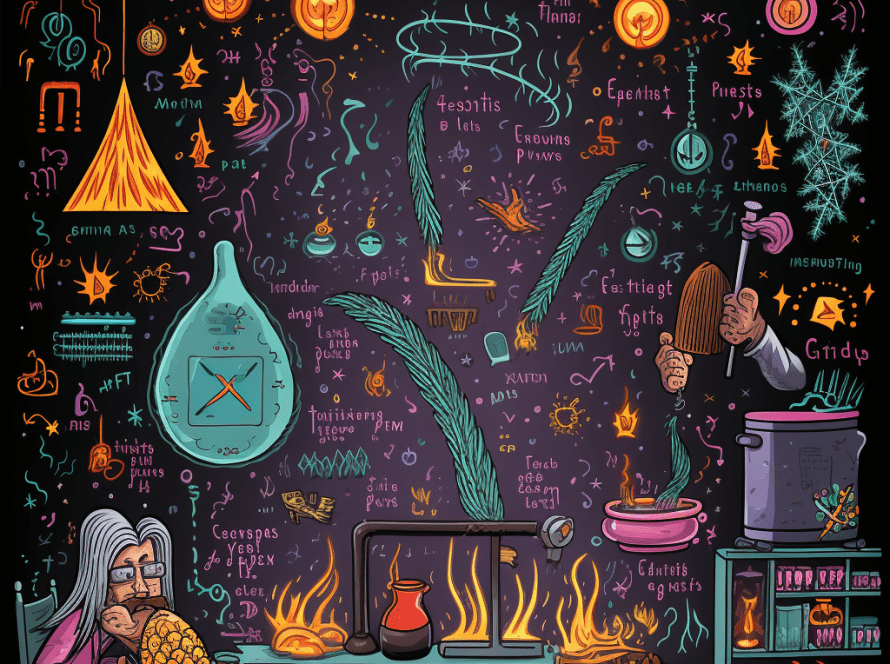Over the last few years, we’ve been witnessing what previously was only possible in science fiction novels – the dawn of AI technology. Even though it seemingly appeared out of nowhere just a moment ago, it’s already becoming integrated into every part of our lives. Self-driving cars, voice assistants, and chatbots are the first things that come to mind when you think of AI, but there are many more unusual ways in which artificial intelligence has influenced our daily affairs.
Today, we’ll be taking a look at 15 unexpected and innovative ways AI technology is being used.
- Text-to-Speech
While nowadays we might take it for granted, converting text into spoken voice wasn’t always so easy. The free text-to-speech tools like CapCut we can use to turn anything we write down into a realistic human voice are the result of decades of research and development.
Machine learning allowed text-to-speech systems to evolve from the old-fashioned robotic sounds, and was first applied to this technology in the late 1990s. - Predicting earthquakes
Did you know that scientists are using AI technology to forecast earthquakes way before they happen? Traditional methods don’t give scientists much warning time before detecting an earthquake and are quite inaccurate, but AI algorithms trained on extensive seismic data can analyze subtle patterns and anomalies that lead to earthquakes.
Because of this, the predictions are more accurate and earlier, potentially saving lives in the process. - Experimenting with new medication
AI is now starting to be used by the pharmaceutical industry to expedite the process of discovering new drugs. AI can learn patterns and connections between different substances from massive amounts of biomedical data, which could potentially identify new drug prospects far quicker than any traditional methods.
This could revolutionize drug research, making it significantly faster and cheaper to discover new medication. - Image and video upscaling
AI-powered tools can be used to effectively scale up videos and images, creating high-resolution content out of low-res input without losing quality and smudging the details. Apps like CapCut use advanced AI algorithms to intelligently scale images and videos up to 4K resolution, remove noise, and sharpen the edges – all in a matter of seconds.
All you have to do is upload your picture or video, choose target resolution, and click “Upscale”! - Detecting AI-generated content
AI isn’t only used to create content that looks as if a human made it – it can also spot AI-generated content and give us a warning. As deep fakes become more common and realistic, we’ll need effective tools that will allow us to distinguish what is fake and what is true.
By analyzing tiny differences in the video or audio that would be unnoticeable to humans, AI can identify deepfakes and help us fight misinformation. - Wildlife conservation
More and more wildlife conservation institutions around the world are using AI-powered drones and cameras that identify, track, and monitor animals in the wild. These machines can judge animal behavior to detect any issues and protect wildlife from poachers. The AI is able to identify any irregularities, alarming the right personnel in time. - Therapy
AI is also being used to support traditional mental health therapies. Algorithms can help in early detection of mental health issues by analyzing speech, writing, and online activity of a person. AI chatbots can also act as virtual therapists that are available 24/7 to provide immediate support, and while they won’t replace a human therapist any time soon, they can supplement regular therapy.
Have you got an old family album that’s full of black and white photographs? With the help of AI, coloring pictures is done in a few seconds, bringing vibrant and realistic colors to the picture. CapCut’s photo colorizer AI detects the content of the image and analyzes the grayscale to choose an accurate color for each pixel. The colorizer comes as part of a suite of AI-powered tools from CapCut that aid graphic and video designers in editing, color correction, upscaling, and more. - Agriculture
While AI won’t be taking the fields from our farmers any time soon, it is being integrated into agriculture to improve yields and farming efficiency. AI algorithms can analyze massive amounts of data from weather patterns to soil conditions and help recommend optimal planting and harvesting strategies. The first agricultural robots are also becoming more widespread, helping with a range of tasks on the farm like weeding or watering. - Preventing food waste
This one is definitely unexpected – AI algorithms and machine learning techniques are being used to predict consumer demand and help retailers optimize their supply, minimizing waste. Home appliances that use AI tech can also track food expiration dates and suggest recipes based on available ingredients to reduce household waste, contributing to the global effort. - Faster emergency response
Emergency services already use AI to speed up and coordinate their rescue efforts. AI helps rescuers analyze real-time data to predict wildfires, floods, droughts, and other natural disasters, giving a timely warning and allowing the services to act preemptively. AI-powered drones are also used to look for survivors, since they can more easily identify survivors in difficult conditions. - Language learning
AI technology can be effectively used to improve learning a second language. AI tutors can be easily personalized to each user’s style of learning and provide immediate feedback on what still needs work. To make exercises more relevant and engaging, AI algorithms can base tasks on news articles, podcasts, or other fresh content. - Accessibility
Similarly to how text-to-speech technology helps visually impaired people, AI-powered solutions can better empower people with other disabilities. Those who can’t easily use a keyboard can use speech recognition algorithms and predictive text. AI-powered powered wheelchairs can move autonomously, helping those with severe motor impairments move around on their own, and various AI smart home devices can help turn homes into accessible havens. - Recruitment
HR departments are starting to employ AI algorithms to analyze thousands of resumes and job applications against requirements to match potential candidates accurately to job openings. AI can also help reduce bias in the hiring process, making sure recruitment is actually data-driven and promotes creating diverse and efficient workforces. - Archaeology
Artificial intelligence has also proved to be useful in the field of archaeology, helping archaeologists discover and preserve historical artifacts. Advanced algorithms can quickly analyze historical data and satellite images to detect potential valuable archaeological sites. AI can also aid in recreating or restoring damaged artifacts and artworks, helping us gather and protect our heritage. - Old photo restoration
By learning patterns from countless photographs, apps like CapCut can help restore old photographs that have been damaged or discolored, transforming them to their former glory in mere moments. These tools can identify and repair blur, noise, and physical damage to pictures, improving sharpness and bringing new clarity to old photos.
To restore your favorite pictures with CapCut, simply upload your scanned photos (make sure you scan them in high resolution, delicately) and see the magic happen – you can then fine-tune options to adjust the image to your preferences. - Fighting climate change
Climate change is an undeniable phenomenon that influences our living conditions more and more with each year. AI algorithms can help predict extreme weather events and optimize energy consumption to lower the global carbon footprint and reduce greenhouse gas emissions that contribute heavily to climate change. AI can also help optimize transportation routes for efficient shipping and deliveries, reducing fuel consumption and promoting electric vehicle alternatives. - Fashion design
We’ve all seen AI art, but have you seen actual AI fashion? Algorithms are used to analyze fashion trends and predict future ones, and even design new apparels. By learning from colossal datasets, AI can generate patterns, mix and match outfits, and create unique designs, becoming a useful tool for designers that look for fresh perspectives and personalized recommendations. - Space exploration
AI will soon be able to assist us in space exploration – it already does by processing massive amounts of data from space telescopes and probes, looking for planets, distant galaxies, and other astronomical phenomena. Since any signal takes significant time when traveling across space, autonomous devices that take decisions on their own are safer and more effective at exploring the cosmos and other planets. - Cooking
Last but not least, AI technology is also being used in cooking to invent new recipes. Algorithms analyze and experiment with different flavor combinations and ingredients to create new and exciting combinations that chefs might never have considered. Together with robotics, AI is used to create autonomous diners where all meals are created fully by machines, with no human input.
AI is definitely shaping our world in ways we have never expected. From predicting earthquakes and aiding space exploration to creating high-quality images and videos, AI is becoming a core part of our lives as we speak. The technology will continue to evolve at a speedy pace, and there will only be more unexpected uses for AI to solve a range of problems around the world.





